Sensory Branding Revolution: Crafting Memorable Experiences with Gerri Hansen
In this exclusive interview, we sit down with Gerri Hansen, a seasoned brand consultant and the visionary founder of BrandSensory, to explore the captivating world of sensory experience design and its profound impact on brand storytelling. With a career spanning over two decades, Gerri Hansen has masterfully honed her expertise in creating immersive brand experiences that transcend the ordinary. She has collaborated with numerous renowned brands, from Small Luxury Hotels of the World to Coutts and Exclusive Collection, weaving a tapestry of sensory delight and authenticity.
Our conversation with Gerri will encompass discussions about sensory design, its significance in brand strategy, and its applications across various industries. We’ll also delve into the transformative effects of sensory design in the hospitality sector, explore the steps involved in creating a unique sensory profile for brands, and discuss the potential for sensory design to enrich various sectors beyond hospitality.
Join us in this insightful interview as we explore the world of sensory experience design with Gerri Hansen, a true pioneer in this exciting field.

Gerri Hansen, Founder of BrandSensory
To connect with our Design Insider readers, it’s crucial for them to become acquainted with the individuals driving the brand, the project, and the expertise. Could you kindly start by introducing yourself and outlining your role?
My name is Gerri Hansen, I’m a brand consultant specialising in sensory experience design and storytelling. For over 20 years I’ve worked with hundreds of brands, working both client and agency side, including strategising brand partnerships for Small Luxury Hotels of the World, designing brand experiences for private bank Coutts, and more recently working with Exclusive Collection to craft the brand strategy and executions across their portfolio. I have always possessed an intuitive approach in bringing brands to life, and for the past six years I have been focussed on understanding the power of stimulating the senses on elevating a client experience. I always felt it was frustrating not having a clear answer in a brand guidelines to the question ‘how does this brand feel?’ and this often led to disjointed executions across channels when designing a brand world with multiple stakeholders. Experiential activity was often born out something that was a fun idea, or ‘on trend’. Or a creative campaign that was the result of one agency’s interpretation rather than a truly authentic story. So over the years, through my work I have been researching and refining a sensory based approach which answers that fundamental question, and resulted in the creation of my business, BrandSensory, which also aims to address the growing need and demand for more authentic and immersive brand experiences across multiple sectors. As founder and director, I work closely with clients to help them to understand their brand on a deeper (sensory) level, codify that through our unique process, and then support them and their teams to design richer, more consistent, customer-centric experiences.
When we refer to sensory design, what exactly does that encompass?
There are a few ways to interpret this, depending on which side of the table you sit on, but in a nutshell we are talking about harnessing and/or addressing the cognitive needs and reactions to sensory stimulus in an environment.
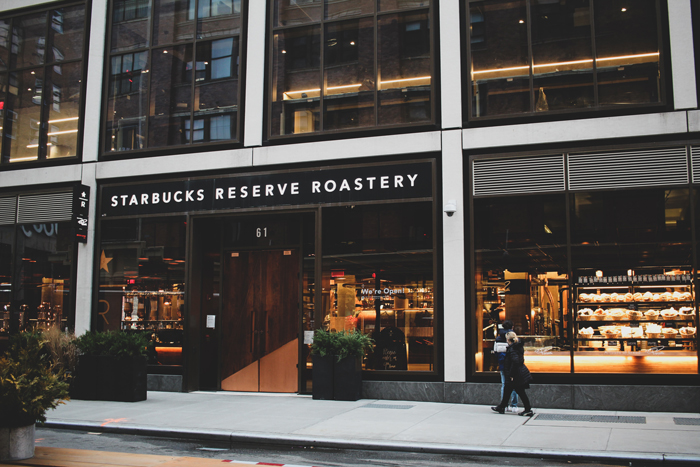
Starbucks Roastery in New York, photo by Crystal Jo
Sensory marketing has been a growing phenomenon for several decades, particularly in the US, and puts the emphasis on targeting certain senses to drive commercially impactful behaviour. For instance, you couldn’t walk past a Starbucks store without being drawn in by the smell of roasting beans – even though commercially it would make more sense for them to grind centrally and distribute ground coffee to their stores, the brand famously understands the power of scent in triggering behaviour. Audio logos (or sonic branding) are now a key feature of advertising due to the proven ability of sound to drive recall and emotion. And we now regularly see the adoption of haptics in mobile content to foster deeper engagement.
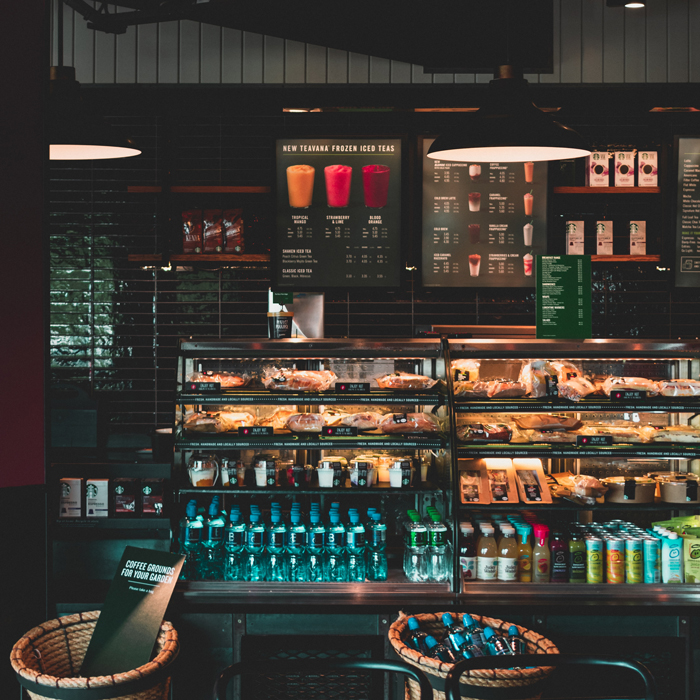
Starbucks store in Dublin, photo by Damiano Baschiera
In the world of interior and structural design, the concept of sensory design, or neuro-centric design, is gathering momentum across workplace, retail, hospitality environments and so on. Designers are using targeted lighting schemes, soundscapes, textures, scents and colours to drive desired behaviour (eg. productivity, attitudinal change, dwell time or even purchase).
However, what no one has done to date is bring these two elements together: harnessing the power of the senses as a strategic focal point for a business, designing a consistent brand ‘world’ across multiple touchpoints; and that is where we specialise. We focus on curating a bespoke sensory profile for the brand, and then support them in cultivating an authentic, sensory-centric environment across multiple customer-facing touchpoints designed to stimulate certain emotions, elevate the guest experience, and drive recognition and advocacy.
In what ways can attending to a hospitality guest’s sensory experience enhance their overall stay? And what benefits does that generate for the hotelier?
Imagine you are checking into a hotel, and it’s eerily quiet other than the sound of some cutlery being sorted, there are bright lights and you can’t find the lifts are because the signage isn’t clear. It smells of cleaning products and burnt toast. The person on front desk wears a grey ill-fitting suit. Your room is bland and uninteresting with stark white walls and sheets. How do you feel? Totally uninspired, perhaps a bit nervous or anxious about the space you’re in, maybe even unwelcome? Can’t wait to leave?
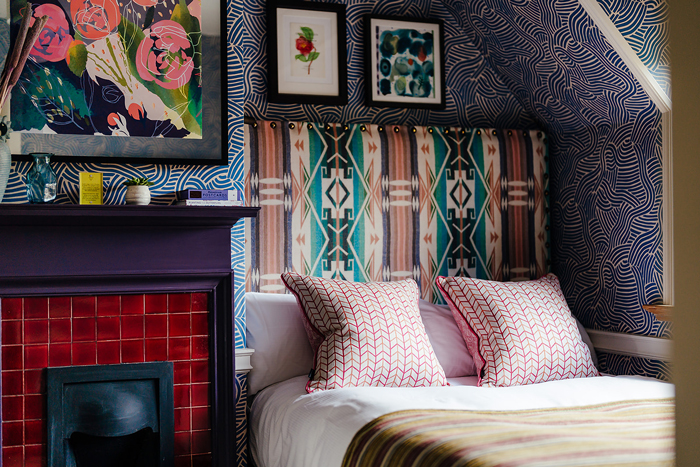
South Lodge Hotel & Spa, photo by Angela Ward-Brown for Exclusive Collection
Now instead imagine that hotel but this time your feet are cushioned by a lovely soft rug, your hand rests on the front desk and you notice its beautiful finish that feels handmade. There is a delightful fragrance coming from somewhere, and the sound of mellow beats and the happy hum of people. The receptionist wears a fashionable jacket stitched with little pops of colour and offers you a delicious welcome drink or biscuit while you wait. The lighting is warm and inviting, and you can clearly see signs that help you to find your room and the other amenities in the hotel. Your room smells lovely, there is a menu of music for you to choose from, curated by the hotel to help you get into whatever frame of mind you need – work, relax, sleep, exercise – and the design makes you want to curl up on the bed or run a bath, feeling totally at home.
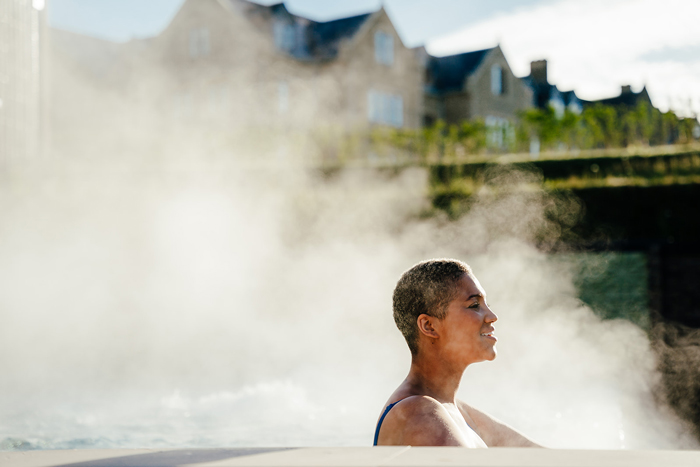
South Lodge Hotel & Spa, photo by Angela Ward-Brown for Exclusive Collection
Which hotel do you feel more comfortable in? Which do you want to return, stay longer, explore more of, tell your friends about?
For the guest this is about creating an environment they feel they belong in, stimulating them to feel that your world is their world. And because that experience is consistent, telling the same story at every touchpoint that is human and authentic, they have a stronger affinity with your brand. And for the hotelier, the benefit is obvious: research proves that when people love a brand story they are more likely to buy again and tell people about it. When people feel connected to a brand they will buy again and increase their spending. Yes, it takes some effort to design on a sensory level, but the brand fame and commercial rewards are the prize.
Would you be able to guide me through the steps involved in creating a sensory package for a brand?
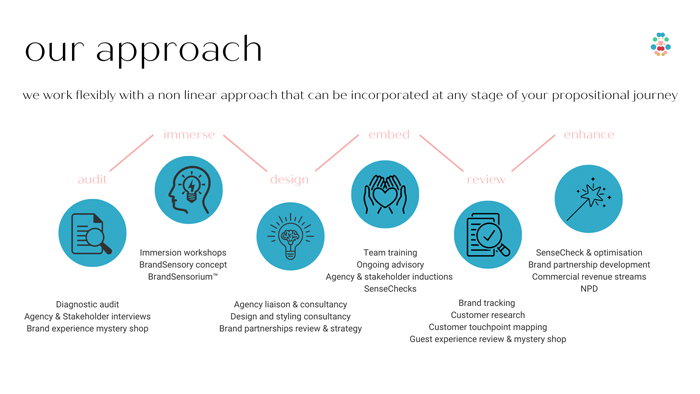
BrandSensory™ process
At BrandSensory, we help businesses to explore and capture their deepest, most authentically human sensory profile, codify it, briefing all relevant suppliers and partners, and create their story so it may then be applied across every channel.
We tailor the work to the needs of our clients, typically involving six phases: audit, immerse, design, embed, review, and enhance. We always start with an audit and immersion, as this helps to get everyone aligned and dig deeply under the skin of the brand to establish the sensory profile. But it is a deliberately non-linear process, allowing us to flex it depending on where the brand is on their propositional journey. For instance, if they are clear about who they are and how it feels to be in their world, we might not need to do much more than capture it for them: simple performing an audit and immersion so they have the tools to consistently implement even in the light of key personnel change. Conversely a new brand might require design support and help embedding the sensory elements through their business. Or an established brand might need to have a review of their guest experience, make some enhancements, and then perhaps go back into design for key areas of focus.
Depending on the client need, we work with multiple partners and stakeholders through the process to embed the brand’s sensory profile or as we call it, their BrandSensorium™. It could involve redesigning the brand identity to be more intuitively relevant to the brand, working with interior designers to embed the brand’s sensory portrait into their design concept, choice of fabrics, lighting or artwork, working with GMs or chefs in the creation of signature drinks or dishes (for one client we recently created a range of cupcakes with completely bespoke flavours and decorations to reflect the taste and sight profile of each of their brands), optimising brand partnerships to ensure they support the proposition more sympathetically, or designing a bespoke fragrance or sound profile to establish the right mood and emotional triggers. Through the process, we work to ensure every aspect of the story they want to convey stems from the brand’s unique profile, ensuring a holistically ‘on brand’ multi-sensory experience for their customers at every turn.
How does collaboration factor into delivering a fully immersive sensory experience within the context of hospitality?
Collaboration is essential, and as such our role in the mix is deliberately non-combative; we’re not out to eat anyone’s lunch! Every business or brand thrives best when the internal and external teams shaping their story work in harmony. So we work with the client to establish that baseline brand sensory profile and then support each partner in bringing it to life.
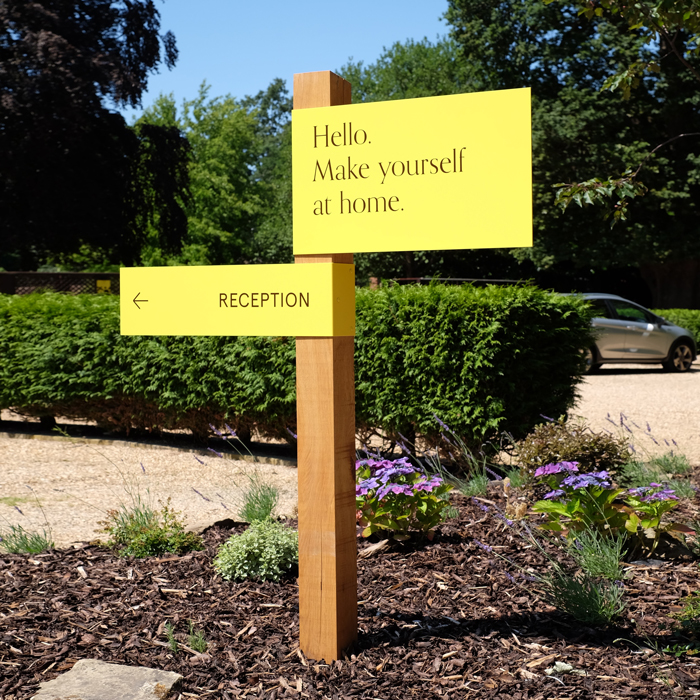
Royal Berkshire refreshed hotel signage
For instance, we’ve recently been working on designing a hotel in the Midlands: having created the sensory profile and brand narrative with the hotel owner, we are now working closely with each of the designers (in this case, three different firms) to create the interior concepts, the design agency for logo and visual identity, the signage experts on the wayfinding strategy and design, the PR agency on the messaging, the digital agency and creative teams in the marketing collateral and so on. If we don’t work together it becomes disconnected – it’s just one designer’s vision battling with another’s. This way the story is an authentic expression of the brand aura, all stitched together to create a holistic experience for the guest – from one channel to the next – and the guest is then free to indulge in that experience to whatever level they desire.
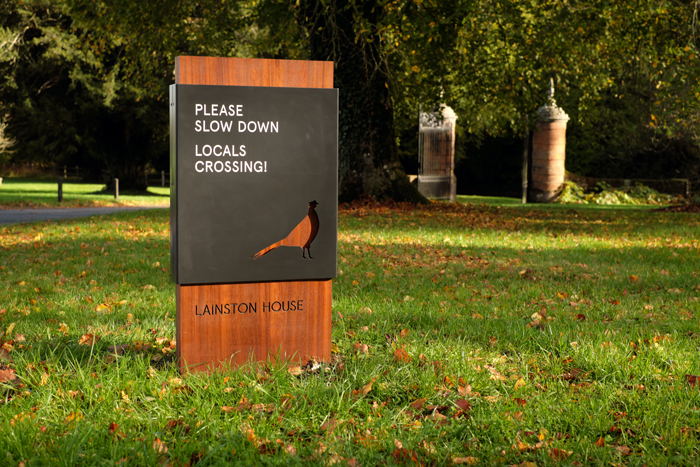
Lainston House hotel signage; photo credit Fenlands
Beyond the hospitality sector, what possibilities exist for addressing sensory experiences?
Hospitality is the obvious place for sensory design, but of course, we are talking about creating human connections so there are many sectors that could also take advantage of sensory design and designing a brand from a more humanised place. Point of fact, I started experimenting with this concept while working at a private bank, where the CEO was struggling to find a way to bring to life the brand aura and wanted to craft a richer experience for his ultra-high-net-worth clients to increase reasons to engage and drive brand affinity.
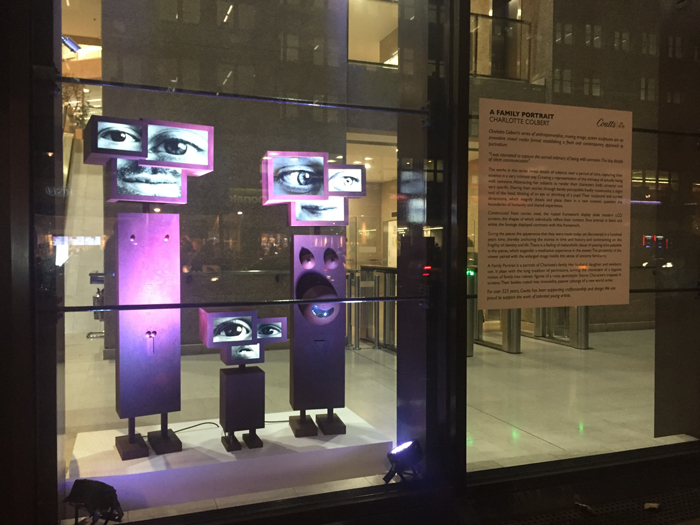
Coutts front windows, partnership with multi-media artist Charlotte Colbert 2018
For instance, to replace the 2D window graphics the brand had always done, I designed the displays with a sensory element, something visually engaging or that could be touched, to draw people in closer and feel something about the brand. With this in mind, businesses targeting high-spenders should be servicing them more intuitively as these more discerning customers demand more but give more in return, so we can consider here high end private care, travel and aviation, and of course, luxury retail and automotive. I also believe there is great opportunity in real estate (both commercial environments and high-street estate agencies which are often devoid of personality) as well as workplace environments and educational institutions to support neurodiversity and foster positive behaviour.

Christmas at Coutts, photo Speed Events
Lastly, with the future of the great British high street constantly under threat, broader retail businesses could really benefit from creating an experience that makes customers feel better than when they walked in, that makes them feel special and valued and as if they belong. Ultimately, like a great first date, it all boils down to simple chemistry – sparking a customer’s senses to create an inexplicable sense of connection with the brand.




